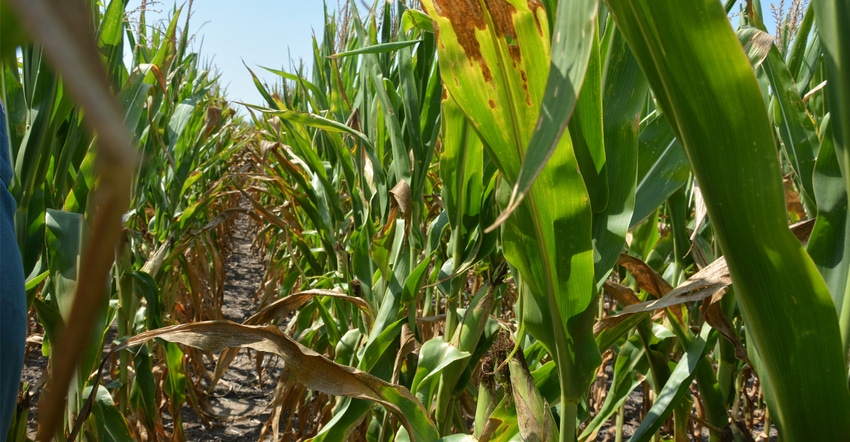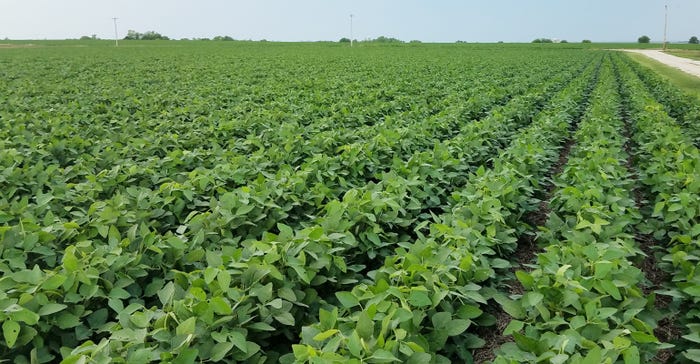
Combines are starting to roll for fall harvest as soggy fields dry out and, for the most part, Kansas farmers are pretty happy with what they are seeing on the yield monitor.
The drought stress that caused corn yield reductions or even total losses in the south-central and east-central part of the state has less effect on later-planted fields that began to get some moisture in early August and soybeans across most of the state are good to excellent.
Now, with harvest fresh in your mind, is the time to make notes that will help guide decisions into planting time for the 2019 harvest, says Katie Demers, a Manhattan-based Technical Service Representative with BASF.
"It’s a good time to make a note of what varieties did the best and where you saw problems," she says. "I was really surprised at how well some of the corn varieties held on through the heat and drought of July and went on to make a crop."
Beyond just yield, she said, farmers should be paying attention to how their weed protection performed and what they may need to do next year to improve that protection, so it lasts to the end of the season. "Even if you only see a few weeds here and there, they will go to seed and create more problems next year," she says.
Demers says farmers should be watching for announcements meetings over the winter that will outline potential solutions that will help them make the right choices.
She adds that watching for diseases that appear under abnormal growing conditions is also a good idea for the planning book. For soybean producers in areas of Kansas that were inundated with rain when they normally see arid conditions, that means fungal diseases such as gray spot in corn and septoria in soybeans.
 SOYBEAN SUCCESS: Most soybean crops across Kansas are being rated good to excellent this year.
SOYBEAN SUCCESS: Most soybean crops across Kansas are being rated good to excellent this year.

"Are you seeing lodged plants?" she asks. "This could be from insect feeding or from disease. We had corn that matured very early this year, thanks to the hot, dry, July but now there are standability issues as the fields have been soaked with rain again and again."
Japanese beetles were an issue in corn and soybeans both, she says. There were also fungal diseases in many fields.
"It’s just a good time to make notes so you can plan earlier in the year for the next harvest," she says.
Demers, who grew up in Iowa and has only been in Kansas for two years, says she was surprised by the resiliency of crops in the much drier Kansas climate.
"There were a lot of fields that where I thought the heat and drought would just devastate the crop, but most of those farmers are harvesting. Their yields are down, but they still have corn," she says.
Watching the soybean crop — which was rated more than 50% good to excellent in the last National Agricultural Statistics Service Survey — Demers says she has really learned to appreciate the impact that no-till farming practices have on crop health.
"In areas where you see conventional-till, or in spots in fields that may have had to be worked to address a particular issue such as repairing terraces, you can see that difference," she says. "The beans are wilted and curled in the worked areas and lush and green in the no-till fields."
Some soybean farmers have been dealing with pod worms, but those areas tend to be localized and the damage does not appear to be severe, she says.
The late rains in August arrived just in time for pod-fill and the soybean pods are looking fat, and conditions are shaping up to make it a really good year for soybean yields, she says.
One potential hurdle, she says, is that the wet, warm weather continues, and beans do not dry down sufficiently for harvest to begin.
"You can use a product such as Sharpen, which is labeled as a dessicant for both soybeans and cotton," she says. "That should be just for commercial fields, though, not for seed fields. You should never use a dessicant on fields you plant to harvest for seed sales."
About the Author(s)
You May Also Like




